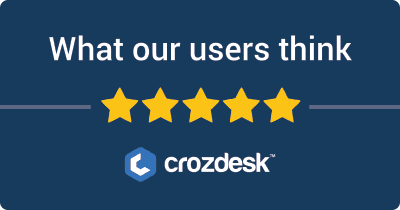
Top YouTube Alternatives & Competitors based on 468 Reviews
Reviews collected from
trustpilot.com
sitejabber.com
facebook.com
trustradius.com
gartner.com
.
| Brand | Pricing |
|---|---|
|
★ ★ ☆ ☆ ☆ 2.1 |
|
|
★ ★ ★ ★ ☆ 3.6 |
Loom offers four pricing tiers: Free, Business ($8/user/month billed annually), Education (custom pricing), and Enterprise (custom pricing). The Free plan includes basic features, while the Business plan adds advanced features such as team management, admin controls, and customizable branding. |
|
★ ★ ★ ★ ☆ 4.2 |
Vidyard has several pricing options including Free, Pro ($15/user/month), Business ($300/month), and Enterprise (custom pricing). The Free plan provides essential features for video hosting, while Pro and Business offer advanced analytics, interactive video elements, and integrations. |
|
|
Wistia provides a free plan with limited features, a Pro plan ($99/month), and a Custom plan for larger businesses. The Pro plan includes advanced video analytics, tools for lead generation, and customization options, catering to businesses looking to boost their video marketing efforts. |
Compare your brand to your competitors
Why should you be looking for a YouTube alternative?
Users often seek alternatives to YouTube for reasons such as specific feature requirements, usability, budget constraints, and customer support. Platforms like Loom, Vidyard, and Wistia cater to unique needs, offering tailored solutions for professionals and businesses. Loom excels in ease of use for quick video messaging, while Vidyard focuses on marketing-oriented features with robust analytics. Wistia targets businesses aiming for high-quality video branding with extensive customization options. This exploration will delve into their distinct features, pricing structures, and ideal user profiles.
Quick Overview of Top YouTube Competitors
-
Loom – Best YouTube Alternative for Quick Video Sharing
- Focuses on ease of use for creating screen recordings and quick video messages.
- Offers instant sharing capabilities with a minimal setup, ideal for teams and remote work.
- Provides analytics features to track viewer engagement on shared videos.
- Integrated comments section for collaborative feedback directly within videos.
-
Vidyard – Feature-Rich YouTube Competitor for Business
- Designed for businesses, enabling personalized video content for marketing and sales.
- Customizable video players that can be branded to match company colors and logos.
- Advanced analytics to measure viewer behavior and engagement metrics.
- Offers integrations with popular CRM and marketing automation tools for seamless workflows.
-
Wistia – Premium YouTube Alternative for Professional Video Hosting
- Emphasizes high-quality video hosting with customization options for branding.
- Interactive video tools including calls-to-action, email capture forms, and annotations.
- In-depth analytics that provides insights into viewer engagement and performance.
- Focused on the needs of marketers with features catering to lead generation and audience targeting.
YouTube Alternatives: Feature by Feature Comparison
| Feature | Loom | Vidyard | Wistia | YouTube |
|---|---|---|---|---|
| Target Audience | Primarily for team communication | Businesses, marketers, and sales | Businesses, marketers, and creatives | Broad audience, general content |
| Video Creation | Instant screen recording, webcam pairing, and quick editing | Screen recording with analytics, video hosting, and customizable players | Screen recording, high-quality video hosting, and customizable players | Basic video upload and editing tools |
| Video Hosting | Cloud-based storage with links for sharing | Cloud hosting with custom domains and embedding options | Powerful video hosting with branding controls | Free video hosting with ads and less customization |
| Analytics | Basic viewer insights | Advanced analytics and viewer tracking | Detailed analytics including heatmaps | Basic analytics on views and engagement |
| Custom Branding | Limited customization options | Custom branding options available | Extensive branding and customization, including player colors and logos | No branding options for creators |
| Calls to Action | Simple CTAs at the end of videos | Advanced CTAs and interactivity directly embedded | Strong CTAs integrated into the player | Limited CTAs; mostly annotations on videos |
| Integrations | Integrates well with team tools like Slack, Zoom | Integrates with CRM and marketing tools (Salesforce, HubSpot) | Integrates with marketing automation platforms | Limited integrations; mainly works with Google tools |
| User Control | Simple dashboard for managing shares and settings | Detailed control over permissions and settings, including viewer access | Advanced user permissions and control over video environments | Basic user control over privacy, no advanced settings |
| Educational Content | Guides and tutorials for team workflows | Extensive resources for video marketing strategies | Offers guides and resources for creators | Large resource community but less tailored for businesses |
| Pricing | Free tier available; competitive pricing for pro features | Different pricing tiers based on features, overall more business-focused | Pricing based on advanced business features; free tier available | Free to use with monetization options |
| Support | Email and support chat for users | Extensive customer support including live chat and dedicated account reps | Priority support for businesses | Community support; limited direct assistance |
Key Takeaways:
- Loom excels in quick team communication with its instant recording features and ease of sharing but lacks branding capabilities.
- Vidyard offers superior analytics and integration with business tools, making it ideal for marketers.
- Wistia provides extensive branding customization and detailed viewer analytics, catering to serious content creators.
- YouTube serves as a broad platform for all users but lacks tailored features for businesses and advanced analytics, which are prominent in its competitors.
Compare your brand to your competitors
Integration Capabilities for each YouTube competitor
| Alternative | Supported Integrations | Compatibility Notes |
|---|---|---|
| YouTube | Google Ads, Google Analytics, Vimeo, Twitter, Facebook | Widely integrated with various marketing, analytics, and social media platforms. |
| Loom | Slack, Microsoft Teams, Google Drive, Trello, Asana, Zoom, Confluence, Notion | Primarily focused on real-time collaboration and project management tools. |
| Vidyard | HubSpot, Salesforce, Marketo, Shopify, Microsoft Teams, Slack, Mailchimp | Strong CRM and marketing automation integrations. Ideal for businesses using marketing platforms. |
| Wistia | HubSpot, Mailchimp, Zapier, WordPress, Salesforce, Marketo, Slack | Emphasis on marketing and lead generation tools; supports automation through Zapier. |
Pros and Cons of each YouTube Alternative
Here’s a comparison of Loom, Vidyard, and Wistia against YouTube, detailing the primary pros and cons of each alternative.
| Alternative | Pros | Cons |
|---|---|---|
| Loom | – User-friendly interface optimized for quick video creation. – Built-in screen recording and webcam features. – Instant sharing capabilities with personalized links. |
– Limited branding options compared to YouTube. – Primarily designed for internal communications, less ideal for public audience. – Storage limits on free plans may restrict extensive use. |
| Vidyard | – Advanced analytics and viewer engagement features. – Customizable player for branding. – Integrates well with marketing and CRM tools. |
– Pricing can be high for small businesses or individuals. – More focused on business applications, which may alienate casual users. – Requires user sign-up to view videos for certain features. |
| Wistia | – Strong emphasis on professional marketing and branding. – Detailed video analytics and heat maps for viewer behavior. – Customizable player and video presentation options. |
– Higher cost compared to other alternatives. – More complex interface which may require time to learn. – May lack extensive reach and social features like YouTube. |
| YouTube | – Extensive reach and largest video audience available. – Free hosting with monetization options. – Strong community engagement and social features. |
– Limited branding customization for videos. – Advertisements can be intrusive to viewer experience. – Competition is high, making discovery difficult without SEO optimization. |
This table highlights the strengths and weaknesses of each platform in relation to YouTube, focusing on specific use cases and features relevant to users.
YouTube vs Competitors: Traffic & Marketing Comparison
Traffic Comparison:
YouTube leads by a substantial margin, boasting organic traffic figures peaking over 22 billion visits per month in mid-2024, while Loom, Vidyard, and Wistia hover in the lower millions. Loom’s traffic fluctuates around 1.2 million monthly, while Vidyard’s figures peak at around 643 thousand. Wistia shows no recorded traffic. This stark contrast highlights YouTube’s dominance in the digital video space, indicating its extensive reach and engagement compared to the other brands, which target specific niches.
Top Performing Keywords:
YouTube excels with keywords like "youtube marketing" (ranked 4) and "you tube" (ranked 1), catering to a broad audience interested in video content creation and promotion. Loom ranks well for "free video editing software" (ranked 1), indicating a focus on user-friendly editing solutions. Vidyard focuses on lead generation terms like "find leads" (ranked 1), appealing to B2B customers. Wistia’s broad range of marketing keywords suggests less specialization. YouTube’s keyword strategy emphasizes broad consumer terms, while others focus on niche features.
Conclusions on Visibility and Reach:
YouTube stands out with unparalleled online visibility, driven by its massive traffic and extensive keyword reach. In contrast, Loom and Vidyard leverage unique positions within specific sectors like video editing and lead generation, catering to targeted audiences. Wistia lacks comparable traffic data, limiting its visibility conclusions. YouTube’s dominance in audience engagement surpasses others, complemented by a vast array of keywords aimed at both casual users and professionals, strengthening its overall market presence.
Compare your brand to your competitors
Other “YouTube” Alternatives & Competitors that you can find for free
Here are five alternatives and competitors to YouTube, along with their key features, strengths, and value propositions:
-
Vimeo
- Key Features: High-quality video hosting, customizable video players, privacy settings, and analytics.
- Strengths: Focused on creative professionals, offers advanced privacy options, and has a supportive community for filmmakers and content creators.
- Value Proposition: Optimal for showcasing artistic content with superior video quality and a professional presentation.
-
Dailymotion
- Key Features: Video streaming, user-generated content, curated channels, and live streaming capabilities.
- Strengths: Global reach with a diverse library of content and a user-friendly interface.
- Value Proposition: An alternative for users looking for more niche content and a different advertising model compared to YouTube.
-
Facebook Watch
- Key Features: Video on demand, original series, social integration, and live broadcasting.
- Strengths: Leverages the massive Facebook user base for distribution and audience engagement.
- Value Proposition: Ideal for brands aiming to connect directly with audiences through social media and community-driven content.
-
Twitch
- Key Features: Live streaming, community interaction, monetization opportunities (e.g., subscriptions, donations), and VOD (Video on Demand) content.
- Strengths: Strong focus on gaming and live content; highly engaged community.
- Value Proposition: The go-to platform for gamers and creators who want real-time interaction with their audience, fostering a unique content experience.
-
BitChute
- Key Features: Peer-to-peer video hosting, free speech focus, and monetization options.
- Strengths: Provides an alternative for users seeking less censorship and an independent platform for diverse views.
- Value Proposition: Appeals to users looking for an open platform that prioritizes free expression and diverse content without tight restrictions.


